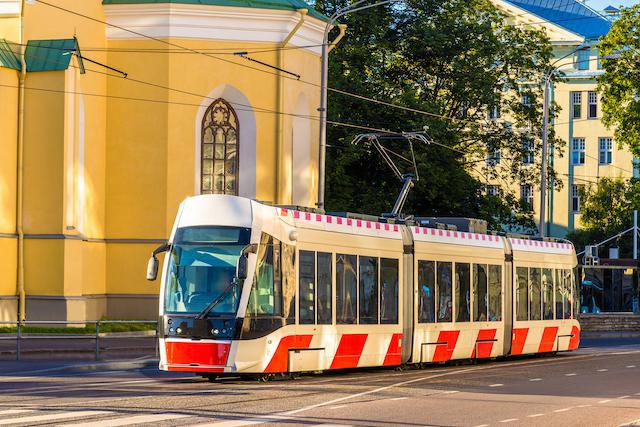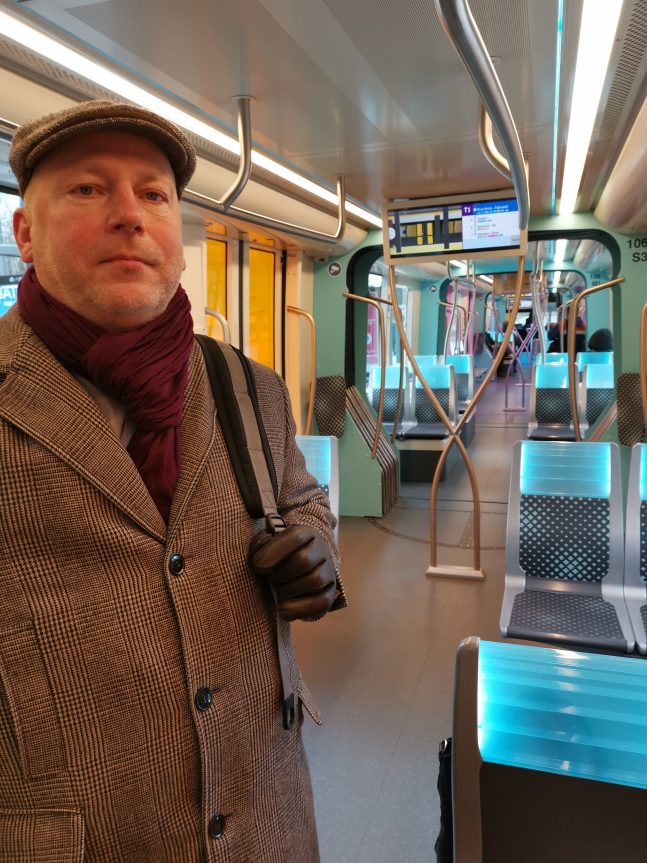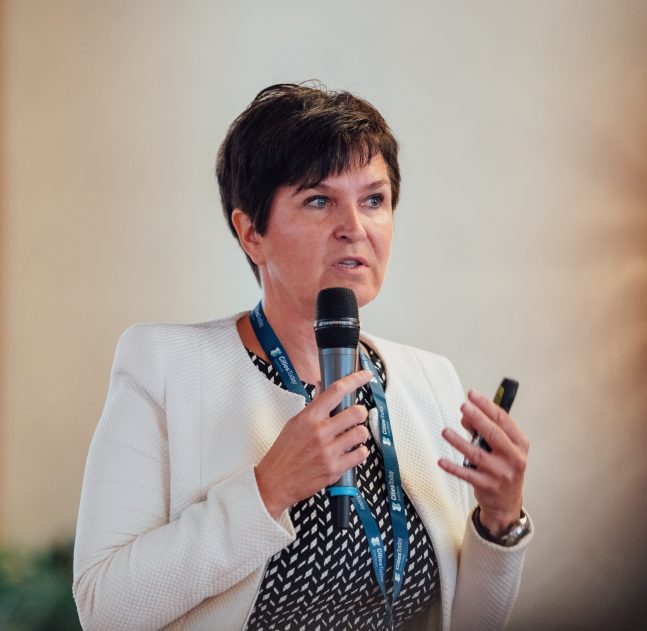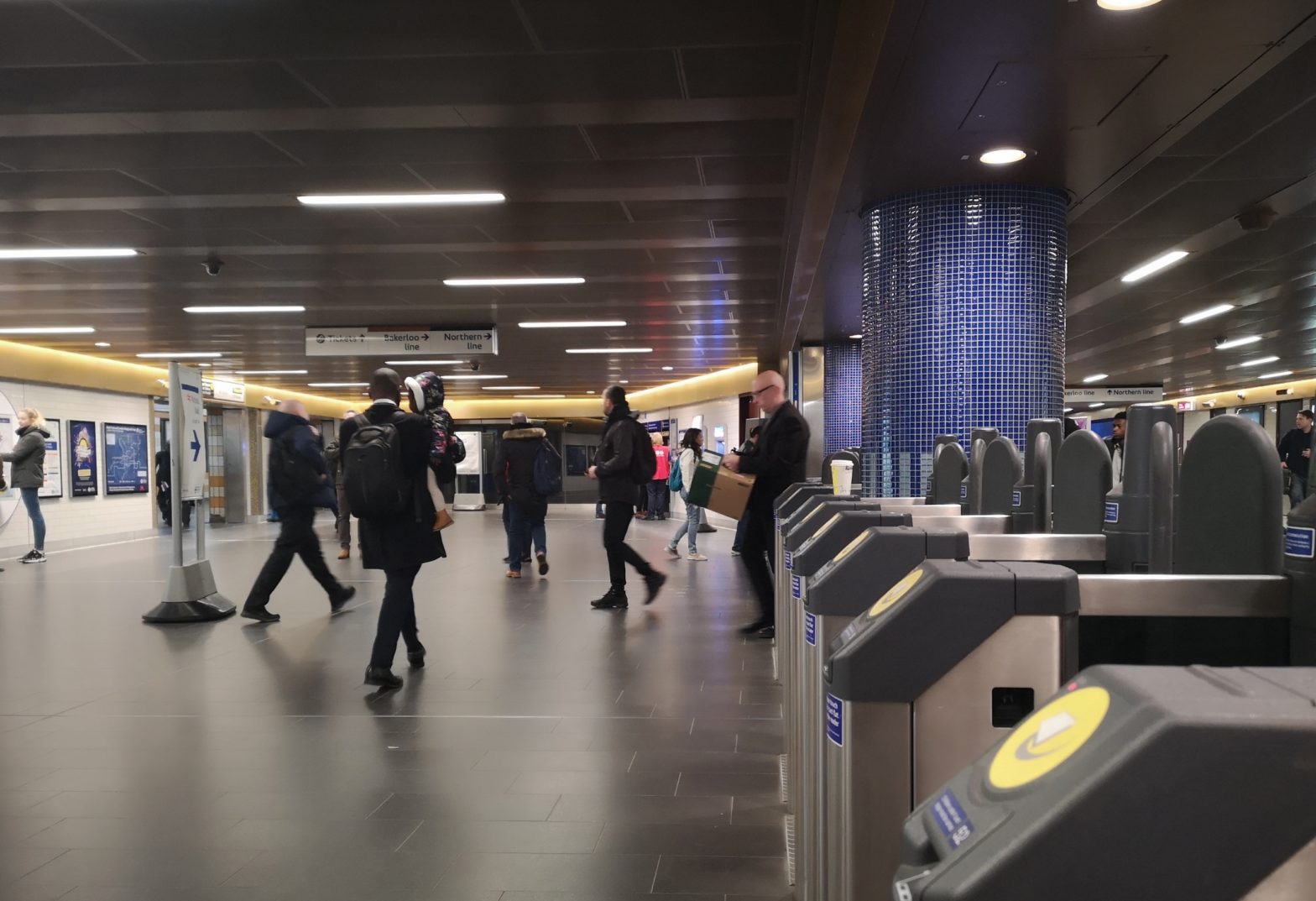
Photo: Shutterstock
What benefits can cities expect from fare-free transport?
11 March 2020
by Christopher Carey
With Kansas City the latest to announce free transport for its residents, Christopher Carey examines the merits of such a policy and questions whether more cities should follow suit
In early December 2019, members of the city council in Kansas City, Missouri unanimously approved a resolution which will see it become the first major US metropolis to introduce free public transport later this year.
It is a brave move in a region where 92 percent of people use cars for transit. The cost of the initiative is estimated at US$8 million–the amount the Kansas City Area Transportation Authority (KCATA) receives from bus fares annually–but supporters of the plan believe that making public transport free will translate into wider benefits.
Bob Bennett, Kansas City’s former CIO believes the new plan will guarantee “profound economic and environmental benefits” for the city, while city council member Eric Bunch–who co-sponsored the free transport scheme along with newly elected Mayor Quinton Lucas–said he didn’t back it for national recognition, but because “it’s the right thing to do.”
Kansas City is the latest in a stream of cities that have chosen to make their public transport free. The main reasons cited for going fare-free are to encourage residents and commuters to choose public transport over private cars; to make transport services available to those on lower incomes; and to create economic benefits from more mobile residents and visitors. But how successful have cities been in delivering results?
Tallinn, Estonia made international headlines when it became the first capital city in the world to introduce free public transport for its residents in 2013. With a population of almost half a million, the municipality undertook the measure to make access to public transport more equitable and for the perceived economic benefits.
“We wanted to improve social mobility and stimulate the local economy by getting people out and about on the evenings and weekends,” says Allan Alaküla, Head of Tallinn’s EU Office and spokesperson for the scheme.
Surveys conducted by the city in 2010 and in 2011 indicated that ticket costs had become the main barrier to increasing usage of public transport, which was in turn hindering the city’s broader economic development.
Initially dismissed by critics as a political stunt designed to boost the then mayor’s popularity, the scheme, which was introduced in January 2013 after a referendum, has since become an integral part of its transit policy and in terms of economic benefits, it has certainly delivered for the council in terms of its revenue model.

Prior to 2013, transport was subsidised by up to 75 percent in the Estonian capital but the city now claims to turn an annual profit of approximately €20 million (US$22.7 million), thanks to a boost in its population after the scheme’s introduction.
Every municipality in Estonia receives an average of €1,000 from the national annual tax revenue for each citizen it has registered on its books. Since Tallinn made this registration one of the main requirements to qualify for free public transport, the city’s population has increased by 27,000 in the past seven years. To access free transport, residents need to pay €2 for a “green card”, and then all their trips are free. Combining this with the tax revenue for each new resident and the fare revenue from tourists and non-residents (€4.5 million a year), the city claims that there is a surplus of €20 million compared to the previous model of subsidised fares.
“A big part of the additional revenue we receive goes right back into improving the network,” comments Alaküla.
The city government also provided an incentive for out-of-towners who don’t qualify for free transport when it introduced free park-and-ride facilities on the outskirts of the city.
“People didn’t really complain too much when they saw the alternatives available to them,” adds Alaküla.
A survey carried out by polling firm Turu-uuringute in 2018 showed that 83 percent of Tallinners were satisfied with the way public transport is organised, while just 6.3 percent said they were unhappy.
But the results on pushing people to switch modes and in particular to get them out of private cars are not as impressive.
In 2014, a year into the experiment, the use of public transport had increased by 14 percent, but car use had only declined by 5 percent. And this was despite a policy of raising on-street parking fees to €6 per hour—almost twice the hourly minimum wage.
And although car use decreased marginally, the average distance travelled by car actually went up.
A further negative is that people have switched from walking to taking transport. Because trips were free, pedestrians began hopping on buses, and the number of trips made on foot dropped by 40 percent, according to a 2016 study by Dr. Oded Cats, Associate Professor at Delft University of Technology in the Netherlands.
A similar unwanted shift occurred in Hasselt, a town of 70,000 residents in Belgium which introduced fare-free transport in 1997. While public ridership increased tenfold, half of the new users were walkers or cyclists and the market share of buses, even after 15 years of the scheme, remained at just 5 percent. Consequently, in the same year Tallinn launched its scheme, Hasselt was forced to reintroduce fares for all passengers over 20 years old because the costs of running the free network had grown fourfold to €3.5 million in the first seven years of operation—an unsustainable increase.
Tallinn is facing similar financial challenges. Despite turning a €20 million profit, it announced an overhaul of its fare structure in early December 2019, which saw ticket prices for non-residents rise by up to 50 percent in the new year—the first increase since 2012.
Tallinn’s Deputy Mayor for Transport, Andrei Novikov, said the fare hike was necessary due to a rise in passenger numbers and the opening of new bus routes, although opposition members of the city council–a special body which represents citizen interests–put forward a motion to overturn this in January in order to make transport free for non-residents as well. Not surprisingly given its desire to preserve its revenues from tax and the fare-box, the city government is against the motion.
Offering non-residents free transport would put Tallinn at a disadvantage, as it is no longer the only municipality in Estonia offering free transport. As of July 2018, the national government changed regulations so that every county can now implement such schemes.
To date 11 of the 15 counties in the country have taken up the offer, including some of Tallinn’s neighbours. The move threatens to limit or even reduce the numbers registering in Tallinn, something Alaküla acknowledges.
“There’s a fight between the municipalities for the taxpayers, no doubt about it,” he comments. “We want to strengthen the motivation of those who are not registered in Tallinn to register here.”
The Luxembourg experiment
The experience of another European government—national rather than local—is a further example of how introducing free transport may change revenue models to the benefit of the government rather than changing the behaviour of users to the benefit of the environment. With a population of just 600,000, the Grand Duchy of Luxembourg became the first country in the world to introduce free public transport on 29 February.
One of the world’s wealthiest countries–with a GDP per capita only surpassed by Qatar–Luxembourg has the highest car ownership per person in the EU, and with half of its workforce commuting from neighbouring Germany, France and Belgium, some of its most congested roads.
Over the past four decades its population has increased by almost 240,000 people and the labour force has grown from 161,000 in 1998 to 427,000 in 2018, fuelled in part by a 168-percent rise in cross-border workers. Sixty percent of commuters use cars to get to work, compared to just 19 percent who use public transport.
The government’s decision to introduce universal free transport for both residents and visitors was met with applause from abroad, but received a somewhat lukewarm response at home.
The main reason is that it is the reliability of the current system–rather than its cost–which is keeping commuters and local residents in their cars.
Many people already benefited from free transport prior to its introduction, including the under-20s, students under 30 and people earning the minimum wage. And public transport in Luxembourg was already cheap and heavily subsidised–a two-hour ticket cost €2 while an all-day second-class ticket was €4. A monthly travel pass across all modes averaged just €50, compared to £253.50 (€296) in London, Europe’s priciest.
Despite these very low prices, Luxembourgers were still reluctant to give up their cars. For many, it’s simply a matter of convenience over cost—public transport is widely viewed as an unreliable choice for most commuters.

“Five years ago we decided to try a new strategy, to move away from individual modes of mobility towards more multi-modal systems,” says François Bausch, Luxembourg’s Minister for Mobility and Public Works.
In 2018 it officially launched its Modu 2.0 sustainable mobility strategy, which includes plans to modernise the rail network, provide better cross-border connections and new inter-modal exchange hubs. By 2025 it hopes to have increased the number of people currently taking public transport by 20 percent.
For Bausch, free transport is just an extension of the efforts to reduce dependence on the car.
“We’ve been working hard on developing a wider strategy and free public transport is simply the icing on the cake.”
While the government believes providing free transport may give the sector the shot in the arm needed to wean dependence off the car (though that had little impact in Tallinn), what the two have in common is that there may be a net positive effect on costs and revenue for the government.
Although the scheme will see the Luxembourg government lose €42 million in ticket sales, it plans to review legislation that allows workers to deduct a lump-sum for travel expenses from their annual tax bill. This could potentially replenish coffers by up to €115 million annually giving them a surplus over the loss of ticket revenue.
In the wider context however, the €42 million lost from ticket sales is tiny compared to the network’s operating costs of €491 million, or the planned investment of €2.2 billion by 2023.
“Free transport alone won’t increase the use of our network, the wider investment across all services is key,” Bausch adds.
€1 a day: the Vienna way
Although cheap transport has had little impact on Luxembourg in terms of reducing car dependence, others have had more success by combining more affordable rates with the fact that they have already made those investments in the network.
Since reducing the price of its annual travel pass from €449 to €365 in May 2012, Vienna has increased sales from 321,000 in 2011 to 822,000 in 2018. When children and students (eligible for cheaper passes) are added to the total, around 1.1 million of Vienna’s 1.9 million population now has a long-term pass, and ridership has also risen.
The brainchild of former Deputy Mayor, Maria Vassilakou–who ran for office for the Green Party in 2010 promising €100 season tickets, but had to settle for a €365 compromise–the ‘Vienna model’ has served as a example to larger cities looking to expand public transport usage without losing a considerable chunk of its revenue.
Before the introduction of €1 a day travel, opponents of the plan like those in Luxembourg, pointed out that public transport was already relatively cheap in comparison to other European cities.
An annual travel pass covering London’s six zones costs £2640 (US$3450), while in Dublin, which has a population 25 percent smaller than Vienna, a yearly pass is priced at €1950 (US$2160).

Angelika Winkler, Vienna’s Deputy Head of Department for Urban Planning and Transport Planning, comments: “It’s not just about the price, you need to have a good public transit network too. But there are other factors that can also influence people. For example, we introduced tougher parking regulations at the same time as our annual pass. You need both, push and pull.”
In addition to the €700 million in subsidies Vienna’s public transit operator, Wiener Linien, receives from the city and national government each year, the city has raised parking fines by 60 percent since 2012, and a public transport tax has been introduced for large scale employers—which amounts to around €2 a month for each employee.
The Vienna model is already being looked at by other major European cities.
Michael Müller, Mayor of Berlin told Swiss newspaper Neue Zürcher Zeitung that “step by step” he wanted to follow the goal replicating Vienna’s euro a day model.
As of January, trials of the €365 annual ticket are already underway in other German cities, including Bonn and Reutlingen.
There are now over 100 cities worldwide that offer some form of fare-free public transport. While most of these are relatively small, with populations of less than 100,000, Tallinn, Luxembourg, Vienna and Kansas City show that larger communities are moving towards the fare-free option even though some big US cities have tried and abandoned operating free downtown-only services in the past.
As with New York’s attempts at pricing roads for users which is due to begin next year, cities in North America will be watching the Kansas City experiment to see if they should follow suit. Residents and visitors to Kansas City already benefit from a free light rail streetcar service, and a recent expansion of its bus rapid transit (BRT) line will mean better transport access for 64,000 residents in the less affluent, outer areas of the city.
As Kansas City’s former CIO Bennett argues in assessing how the city will offset the loss of US$8 million fare revenue, cities need to look to land value capture as well as explore the economic and social benefits of bringing transport to the lowest-income residents. Although Tallinn has seen both positive and negative results from its scheme, the highest increases in public transport ridership have been in the poorer boroughs of the city.
So while free or very cheap transport may well cost the city revenue if viewed as a pure balance sheet item, what price should cities put on making communities more liveable and equitable?
Trash for tickets?
In July 2019, Rome began trialling a new service that offers free rides to commuters who recycle their waste. The programme, +Ricicli +Viaggi (the more you recycle, the more you travel) allows passengers to return plastic bottles in exchange for a €0.05 credit that can be accrued to buy digital tickets.
Through the MyCicero app, users can scan their personal barcode on special recycling machines and then insert plastic bottles to gain a credit. A standard ticket–valid for one metro ride or 100 minutes on all buses allowing transfers–costs €1.50, meaning 30 bottles will get recyclers a free ride. Launched by Rome Mayor Virginia Raggi on behalf of the city’s transport network, Atac, the initiative saw recycling machines placed in three metro stations for a 12-month testing phase. Should it prove to be a success, authorities will expand the scheme.
The Eternal City faces huge issues regarding waste, with rubbish often overflowing from bins. While the trial isn’t enough to stem this issue, it’s a step in the right direction. As Raggi said in a statement, “Even small gestures are important”. The city follows Istanbul’s example, who introduced a similar scheme in September 2018.






